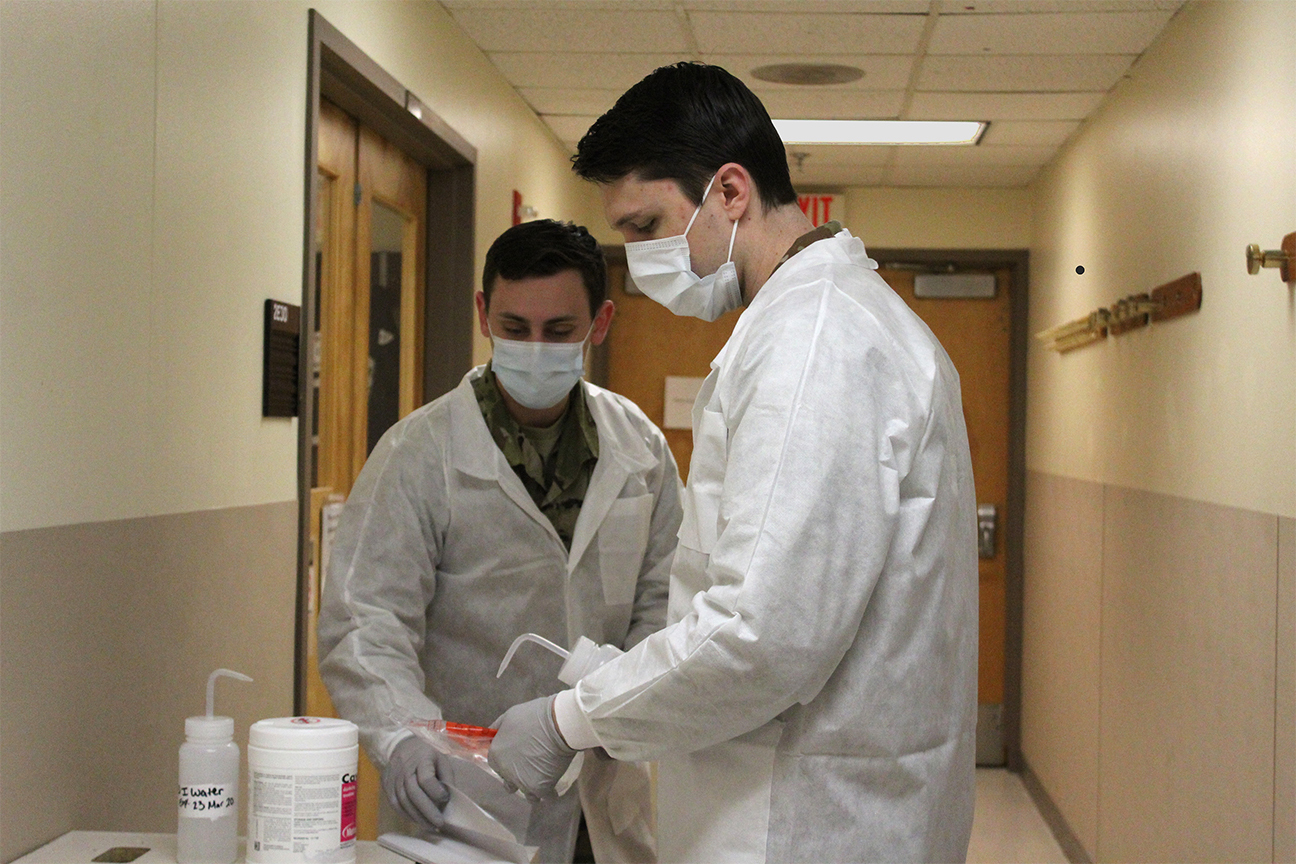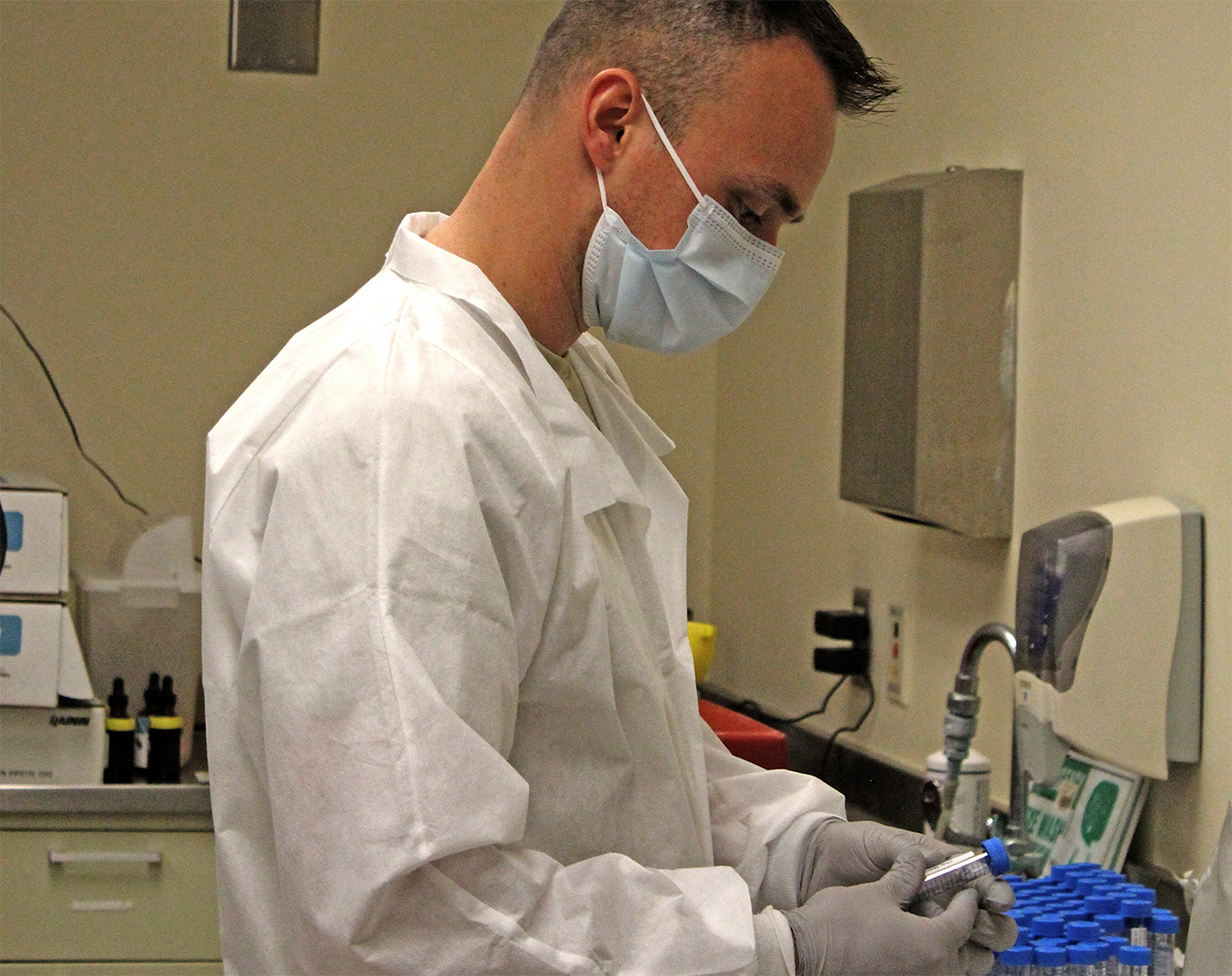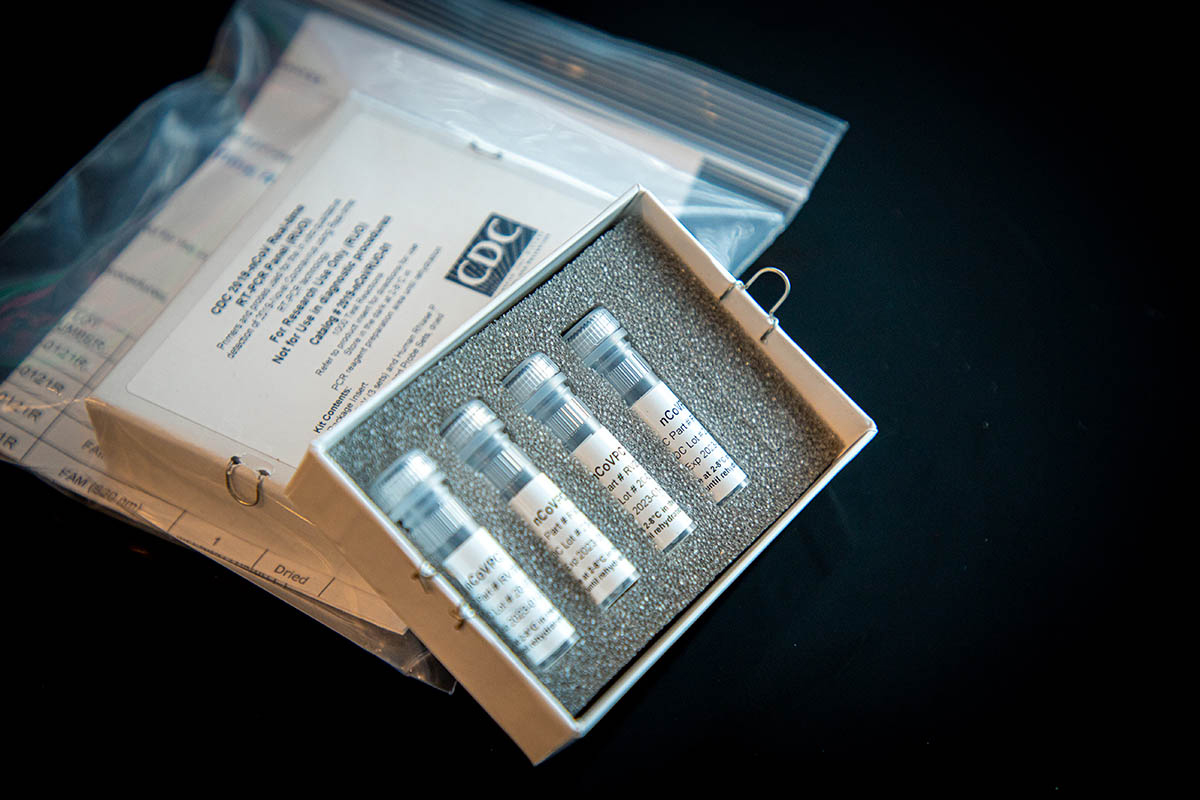WRIGHT-PATTERSON AIR FORCE BASE, Ohio – With the coronavirus disease 2019, or COVID-19 pandemic posing a serious public health risk, new terms have become common in everyday conversations. New phrases such as “social distancing,” “flatten the curve,” “telework,” and others dominate discussions at work, on the news and at home.
Educating oneself about how to prevent spreading the disease has become critical to slow and hopefully prevent the spread of this invisible and sometimes deadly virus. Some may carry the virus and not even know it.
“We are fortunate to have the medical and research expertise we have right here at Wright-Patterson,” said Col. Tom Sherman, 88th Air Base Wing and installation commander. “Having our Wright-Patterson Medical Center professionals and laboratory technicians from the 711th Human Performance Wing’s Epidemiology lab here working together is a tremendous capability to combat this disease, and our Wright-Patt family should feel good about that.”
If a person develops symptoms of fever, cough, or other symptoms that could be consistent with a common cold, influenza, or COVID-19, they should stay home and home-isolate themselves, say infectious disease physicians from the 88th Medical Group.
“People should cover their mouth and nose with things like a cloth mask, or tissue, and distance themselves from household contacts,” said Dr. (Maj.) Devin Kelly, Chief of Infectious Disease.
The Centers for Disease Control and Prevention also offer a website for what to do if you are sick or if you are caring for someone who is sick: https://www.cdc.gov/coronavirus/2019-ncov/if-you-are-sick/index.html.
“If you have fever, cough, and are older than 65, immunocompromised, diabetic, or suffer from chronic kidney disease, heart disease, or lung disease you may be tested for COVID-19,” Dr. Kelly said.
“If you are having severe symptoms such as shortness of breath, trouble breathing, or your initial symptoms are getting worse, please contact your medical provider or seek emergency medical care,” he added.
Only a medical provider decides when to test a patient for COVID-19/Coronavirus. This is based on a variety of factors such as: underlying pre-existing health conditions, travel history, contact with confirmed COVID-19 patients, the presence of symptoms and availability of testing materials.
“When a medical provider decides to test, a nasal wash or nasopharyngeal (NP) swab is obtained,” said Dr. (Capt.) Gregory Buchek, an 88th MDG Infectious Disease Physician. “The nasal wash involves sterile saline flushed into an individual’s nose and the fluid is collected in a cup. A NP swab is a type of swab that is inserted into an individual’s nose and then removed. The nasal wash or NP swab is then sent for COVID-19 testing. A positive test then confirms the diagnosis of COVID-19.”
The patient’s Primary Care Manager then contacts the patient to inform them of positive or negative results. If the test is positive for COVID-19 then further guidance is provided to the patient, and public health may contact the patient to gather further information. If individuals are quarantined or isolated and have a living space that is suitable, then the individual is to stay at home for the duration of their quarantine or isolation, according to Dr. Kelly.
Quarantine is recommended for 14 days and is for individuals who have no symptoms, who had a high-risk exposure to COVID-19 or high-risk travel. High risk exposures include close contact (within 6 feet for 5 minutes or longer) with someone with positive laboratory confirmed COVID-19 within the past 14 days. High risk travel includes any travel outside of Ohio.
Home-isolation is for someone who has symptoms. People confirmed or suspected to have COVID-19, who have stayed home (home-isolated) can stop home isolation under the following conditions:
You have had no fever for at least 72 hours (that is three full days of no fever without the use medicine that reduces fevers such as Tylenol) AND
You have had substantial improvement in respiratory symptoms AND
You have isolated for a minimum of at least 7 days since your symptoms first appeared.
If you have questions about returning to work or you are not improving, consult your physician.
When Public Health officials are notified of a positive test result, they then notify the appropriate commander and a medical provider notifies the individual. Persons who are considered a close contact of the COVID-19 positive patient are contacted by Public Health, but they are not given the name of the positive individual unless permission is granted by the patient.
“The majority of patients who are diagnosed with COVID-19 will be able to treat themselves and monitor their symptoms while recovering at home,” said Dr. Kelly. “Medical staff and support staff will be available to the patients as needed, typically, through telephone calls and virtual visits. If a patient diagnosed with COVID-19 develops severe symptoms such as shortness of breath or trouble breathing, then they will be directed to their medical provider or to seek emergency medical care. If hospitalization is required, then they will be cared for in the hospital in designated rooms until their severe symptoms improve and they can be cared for at home.”
For the detection of SARS-CoV-2, the infection that causes COVID 19, the multi-disciplinary team at the 88th Medical Group’s COVID Specimen Collection site will obtain a nasal specimen from the patient, according to Lt. Col. Patrick Cutter, 88 MDG Laboratory Flight commander. “This specimen will be either a nasopharyngeal swab collection or saline nasal wash. Both of these methods collect cells that will be tested for the presence of the virus,” Cutter said.
The laboratory personnel at the Wright-Patterson Medical Center and the USAFSAM Epidemiology Laboratory work hand in hand to make sure that the specimens are of good quality ensuring accurate results.
The specimens are collected at the 88th Medical Group lab and then transported to the United States Air Force School of Aerospace Medicine’s Epidemiology Lab, part of the Air Force Research Laboratory’s 711th Human Performance Wing, located at Wright-Patterson AFB.
“Since the Epidemiology Lab possesses the Air Force’s most modern and high-throughput diagnostic medical instrumentation, it serves as the DoD’s premier COVID testing center receiving specimens from across the globe,” said Cutter.
Once the sample is received at the Epidemiology Laboratory, it is logged in and patient data is verified. Part of the responsibility of a clinical reference lab is to ensure that the specimen received is from the correct patient, and that the correct test is ordered. Once this information has been validated, the sample is ready for processing.
According to Lt. Col. Aaron Lambert, the USAFSAM Epidemiology Laboratory division chief, the first step in testing involves the extraction of the viral genetic material from the cells that were obtained during collection. The extraction method can take a technician anywhere from 1 to 3 hours. Following the extraction method, PCR analysis of the sample is performed. PCR is a complex and highly sensitive technique in which targeted gene sequences are amplified by using various enzymes to increase the amount of genetic material to a detectable level if present. Once the testing is complete, the results are logged into the electronic health record and made available to the providers at the Medical Center.
“Fortunately, the Air Force has some of the most skilled civilian and military laboratory personnel available who have been extensively trained to safely work with a large amount of specimens at one time,” said Cutter.
“We typically see most results available within 48 hours,” said Cutter. “It is amazing to see a process work so well with such a complex test for a virus that was virtually unknown a few months back. This speaks credit to the amazing job that the Wright-Patterson Medical Group and Epidemiology Laboratory team have done to respond to our nation’s call during this pandemic.”
Click here for more COVID-19 information.

Senior Airman Brian Holloway and Staff Sgt. Gregory Railey decontaminate COVID-19 specimens collected from the 88th Medical Group testing site before login at microbiology and transport to the 711th Human Performance Wing’s Epidemiology Lab at the United States Air Force School of Aerospace Medicine (USAFSAM). (U.S. Air Force photo/Kristen Van Wert)

Capt Daniel Wilson, Chief, 88th Medical Group Core Lab, shown here creating in-house vital transport medium for COVID-19 testing due to a national shortage. (U.S. Air Force photo/Kristen Van Wert)

This is a picture of CDC’s laboratory test kit for severe acute respiratory syndrome coronavirus 2 (SARS-CoV-2). CDC tests are provided to U.S. state and local public health laboratories, and Department of Defense (DoD) laboratories. (Photo courtesy of CDC)

